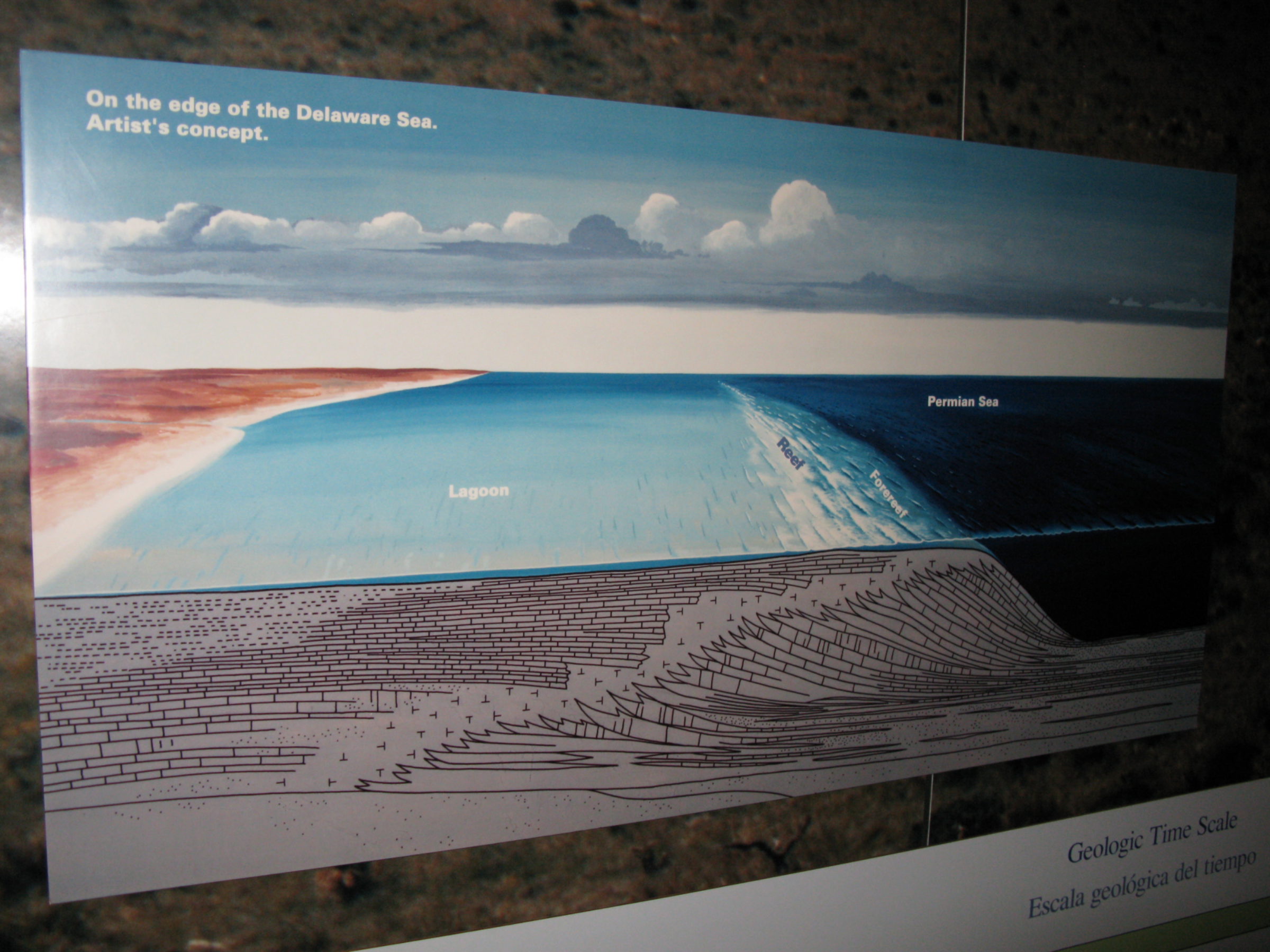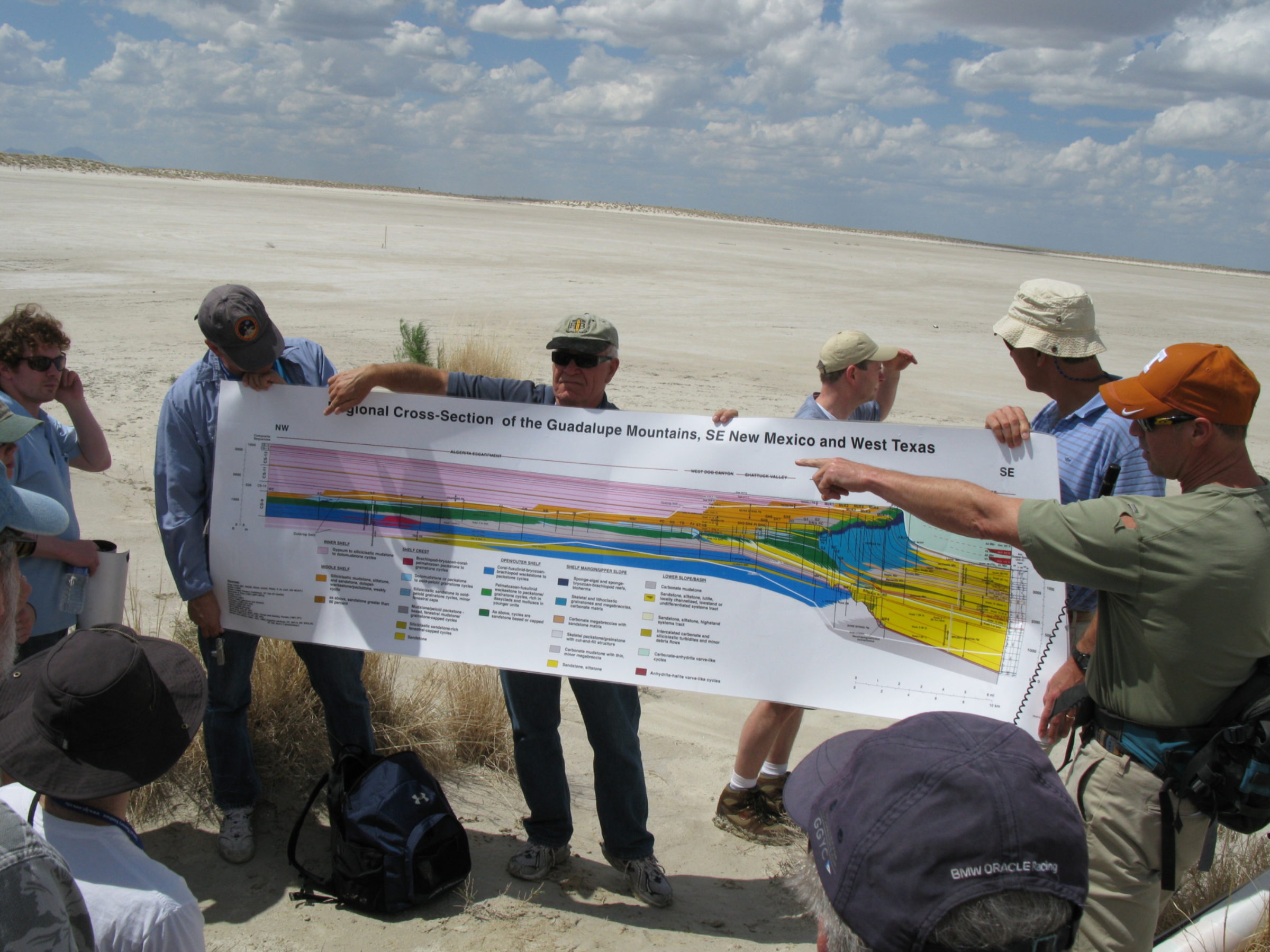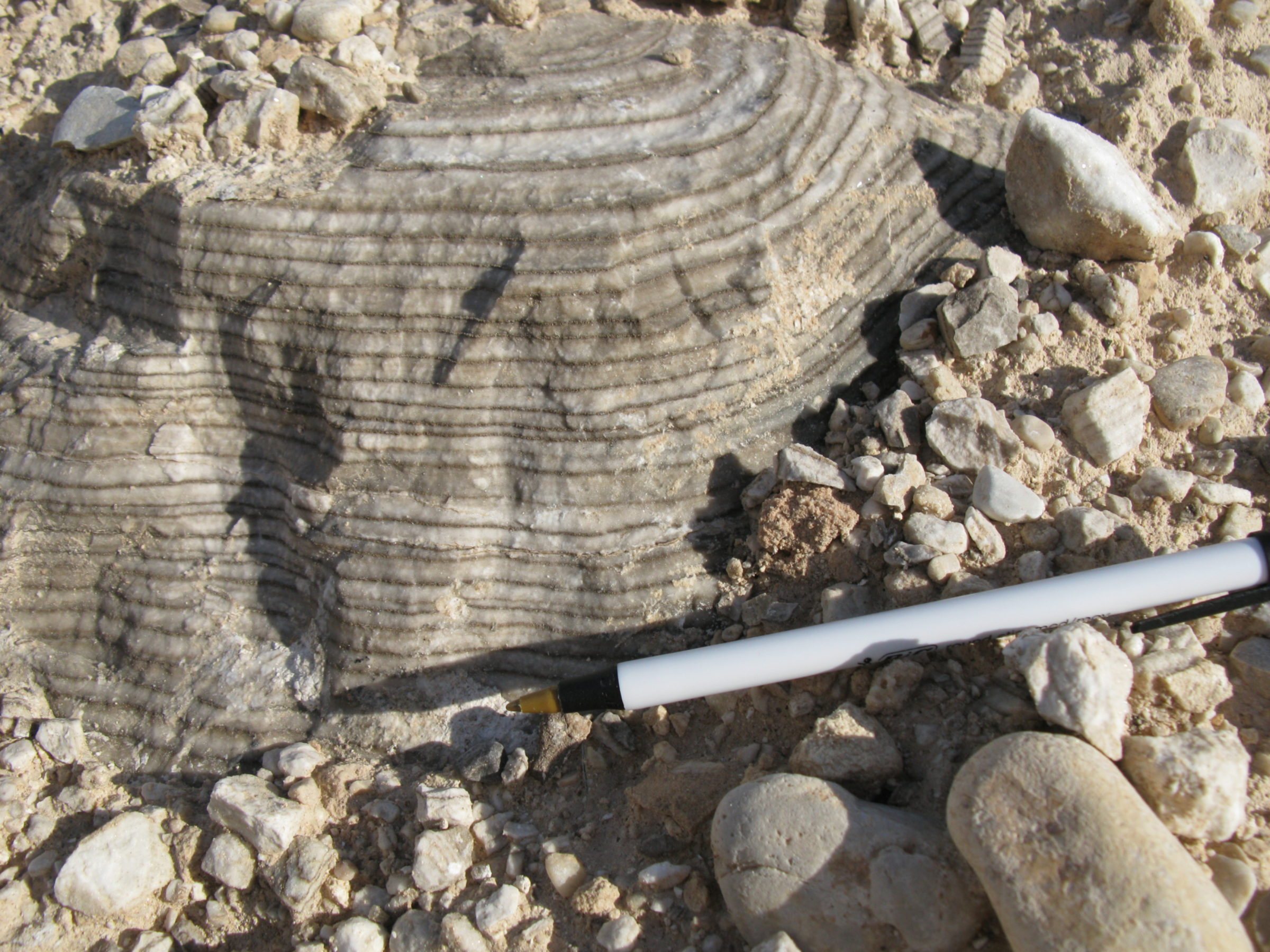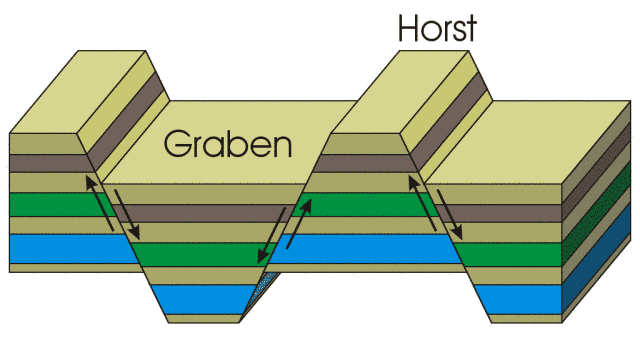Ryan Anderson • Apr 26, 2010
MarsSed 2010 Field Trip Day 1: Guadalupe Mountains and Evaporites
Hello everyone, I’m back from the MarsSed 2010 meeting in El Paso! The meeting was great: it was small and focused on sedimentology and stratigraphy on Mars, with lots of room for discussion. Even better, there were plenty of terrestrial geologists attending, and their comments were extremely helpful for me, and probably many other Martians who lack a geology background.
After two and a half days of presentations and discussion (and a lot of learning on my part), we headed off on our field trip to the Guadalupe Mountains!
We started off in a salt flat graben with a lovely view of the Guadalupe mountains. What’s a graben, you say? It is a low-lying block of land, bordered by parallel faults. If you have heard of the “basin and range” region of the southwestern US, then the basins are graben. The mountain ranges are also called “horsts”.


After discussing the cross section in some detail, and particularly admiring the large, inclined beds of the reef that were exposed in the mountains, we moved on to take a look at the deposits that filled the ancient Delaware basin when the sea began to dry out. The deposits have a very striking light and dark banding:

Something similar may have happened in the Mediterranean Sea more recently. It is thought that occasionally, the ocean level drops to the point where the Mediterranean is cut off from the Atlantic, and begins to dry out, depositing similar salts on its floor.
The relevance to Mars in this case is a lot more clear. There is evidence that many large craters were once filled with water. Now they are bone-dry, so presumably big evaporite deposits should be common on Mars! There are nice big stacks of hydrated sulfates at the bottom of Valles Marineris which might be remnants of such a deposit that precipitated out of a body of water in the canyon.
Stay tuned for Days 2 and 3 of the field trip! If you’re really interested, I suggest that you check out the awesome field guide that was made especially for our trip.


 Explore Worlds
Explore Worlds Find Life
Find Life Defend Earth
Defend Earth



